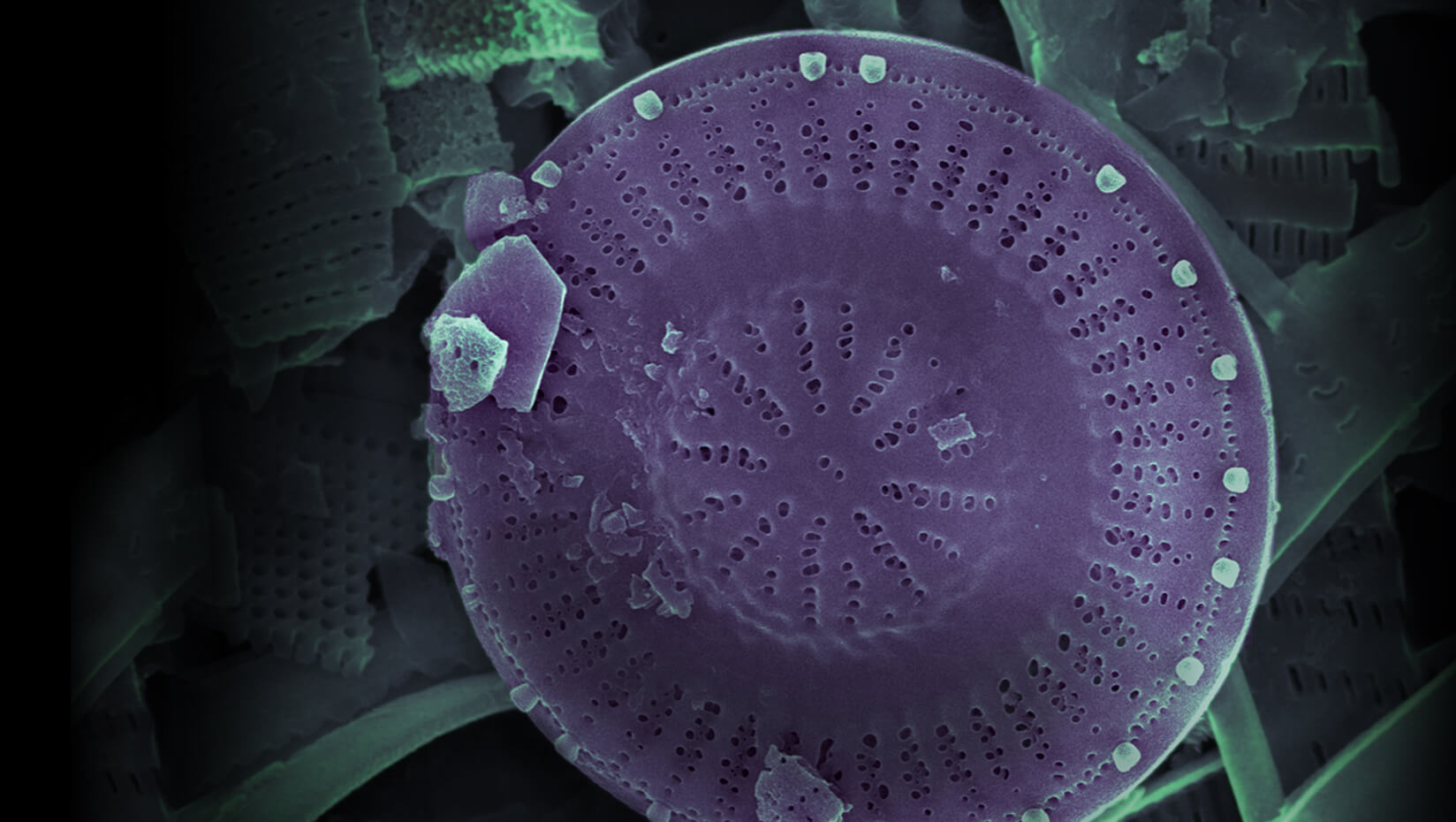
UMaine researchers refining Arctic climate history through diatoms
Just above the Arctic Circle, in remote southwestern Greenland, UMaine researchers are seeking to better understand the effects of a changing climate on arctic lakes by looking at one of their smallest inhabitants — Discostella stelligera.
The research team conducted a large-scale experiment to test the role of a lake’s thermal structure on populations of D. stelligera, a species of diatom whose abundance is often used as an indicator of warming induced changes in lakes throughout the Northern Hemisphere.
The team, led by Jasmine Saros, professor of paleoecology and lake ecology in the School of Biology and Ecology and the Climate Change Institute, shared the results of this study in a recent paper published in the journal Limnology and Oceanography Letters.
Diatoms, a type of single-celled algae which encase themselves in distinctive and elaborate glass-like shells, are very sensitive to environmental change. The microscopic silica fossils they leave behind accumulate in lake sediments and create a paleolimnological record of past environmental conditions that can extend thousands of years.
“In many lakes across the Northern Hemisphere, paleolimnological records have revealed that the relative abundances of D. stelligera changed over the past century, with these widespread shifts attributed to climate change,” write the research team.
However the mechanisms underlying these observed changes were not well understood.
The team recognized that in some lakes in the Northern Hemisphere experiencing warming, like the ones they are studying in Greenland, populations of D. stelligera have remained the same, or even declined over the same time frame necessitating an inquiry into the environmental drivers behind these observed differences in change.
Saros and her team evaluated the abundance of the species in two small arctic lakes near Kangerlussuaq, Greenland over the summers of 2013 and 2014. Each lake was similar in size, depth, thermal structure and abundance of D. stelligera.
In many arctic lakes during the summer months a warm, less dense layer of water, heated by the sun, forms at the surface and ‘floats’ on top of the cooler, more dense water below. The point at which these two layers meet is known as the mixing depth.
A lake’s thermal structure refers to this natural stratification of the water column.
Many climate- and environmental-related factors can influence a lake’s thermal structure including atmospheric temperature, solar radiation, wind strength, changing water chemistry and turbidity.
During the study, each lake’s thermal structure and diatom population were monitored, however during the second year, the experimental lake was mechanically manipulated to alter its thermal structure.
Saros’ team employed a solar-powered hydraulic lift system in the experimental lake to disrupt this natural stratification. The device, known as a SolarBee, pumps cooler water from the deeper parts of the lake and moves it to the surface of the lake, effectively expanding the warmer water layer and promoting a deeper mixing depth.
While D. stelligera was abundant in both unmodified lakes naturally, populations in the experimental lake plummeted after the whole-lake thermal manipulation.
The researchers confirmed that D. stelligera thrive in lakes with shallower mixing depths and confirm the use of the species as an indicator of climate-driven changes in lakes.
“The broader application of this tool to lake sediment records will yield greater insight into longer-term variability in the response of lake ecosystems to climate,” write the researchers.
UMaine researchers Robert Northington and Dennis Anderson, and Nicholas John Anderson from Loughborough University in Leicestershire, UK, co-authored the paper with Saros.
Contact: Walter Beckwith, 207.581.3729
